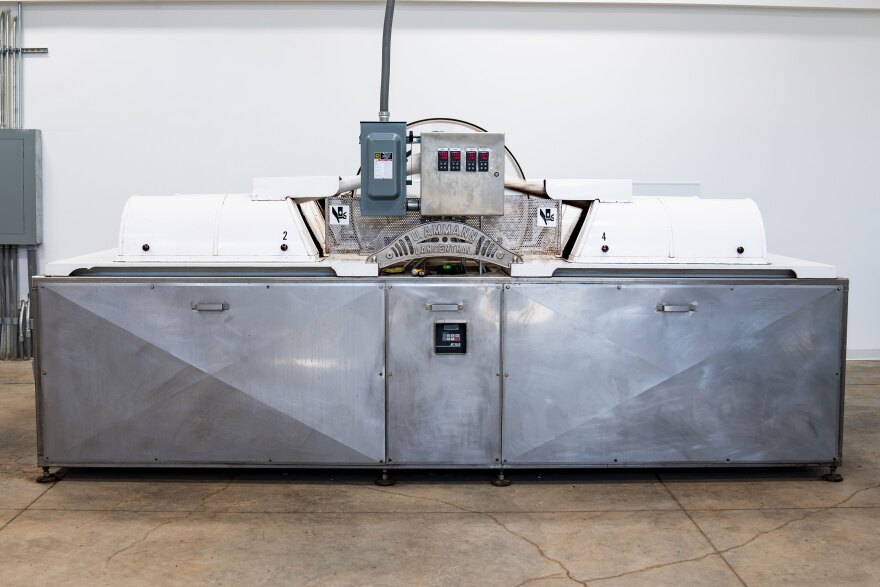Utah is a great place to find some Valentine’s Day sweets. The state has been called a hub for artisan chocolate, and Food and Wine Magazine lists three Utah makers in the top 50 in the United States.
Part of what makes Utah ideal for chocolate making is its dry air and cooler temperatures found at higher elevations.
“We do a lot of cacao bean storage where you want to keep the beans below a certain moisture content,” said Anna Seear, one of the founders of Ritual Chocolate in Heber. “And also when we temper and mold the bars, you want to make sure there's not too much moisture in the air.”
Grant Fry, head chocolate maker at Taste Artisan Chocolate in Provo, agreed that the low humidity is a plus. He also said making chocolate in the Utah Valley means he doesn’t have to manage the temperature as much as in other parts of the country.
The Utah Valley is part of what Fry tries to highlight when he makes his bars. In 2020, Taste partnered with Explore Utah Valley to make chocolates inspired by scenes unique to that part of the state.

One of the creations from that collaboration is the Mt. Timpanogos bar. The visitors bureau provided artwork of hikers walking through a field of wildflowers on their way to the peak of Mount Timpanogos.
“I immediately thought of that smell of being out there hiking,” Fry said. “And we thought of honey.”
But not just any honey: Fry uses chunks of locally sourced raw honeycomb. All of the bars in this collection feature ingredients from local food producers. He uses things like Santaquin apples, Payson honey, and cinnamon rum distilled in Pleasant Grove.
“We want to showcase all these other great makers in Utah alongside what we're making,” he said.
These ingredients go into chocolate bars inspired by the Alpine Loop, downtown Provo and the Radha Krishna Temple in Spanish Fork.
For Fry, chocolate making is an artistic process.
“Every origin that we get cacao from has wildly different flavor notes,” he said. “The roast that we do affects those flavor notes, affects the balance.”
One key piece of equipment in craft chocolate production is the conche. This machine mixes and agitates the chocolate to get the flavors just right and gives the finished bar a smooth texture, but there isn’t just one way to work the chocolate.
“This is a process that chocolate makers do very differently from one another,” Fry said. “Some run the conche at a lower temperature and they run it a really long time. Some do higher temperatures, shorter times.”
Seear in Heber uses a Swiss conche from 1915. Her machine has a granite bed and a steel roller that goes back and forth across the hot liquid chocolate.

“It's a piece of history, but it's not just that we're using it because it's the old way,” Seear said. “We were using it because it really does make a difference.”
She believes using older techniques has been key to Ritual Chocolate’s success.
“We're really going back to this slower method of chocolate making, which we really feel is better for texture and mouthfeel,” she said.
Although Utah has no shortage of businesses selling sweets, Seear said her chocolate offers something different to the people who live in the state.
“They can know that the cocoa beans that they're getting are being sourced responsibly,” she said. “There's not a lot of sugar in our chocolate. So I think it's definitely a healthier option.” She added that they also use better quality cacao. “We're trying to create a tasting experience with chocolate.”
Both Seare and Fry suspect that artisan chocolate is prevalent in Utah because so many people who live in the state don’t drink alcohol or coffee. Chocolate offers a different way to be involved in a craft movement.
“Chocolate is very family friendly,” Seear said. “And I feel like people here can really feel like they're part of a food scene. It's wonderful that you can be a connoisseur of chocolate. You can learn how to taste.”







